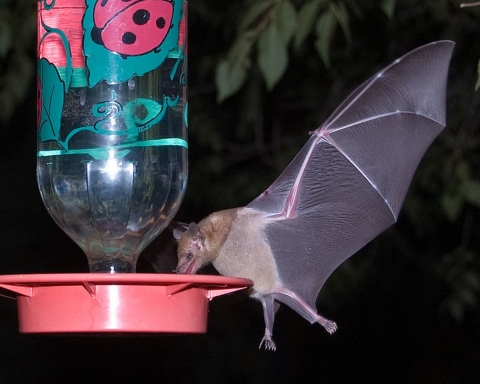Imagine enjoying a starry and fragrant night in the garden of shadow and moonlight. As daylight pollinators are settling down to rest, night pollinators appear for a feeding fest. Night pollinators are drawn by the eerie charm of pale flowers blooming at night. Many people only think of gardens as something to enjoy during the daylight, but moon gardens can be enjoyed during the night and attract night pollinators such as nectar feeding bats and moths. Night pollinators are attracted to the lighter colored and heavily fragrant flowers of night blooming plants like evening primrose and cacti, such as the saguaro. Moon gardens can also attract insects that will invite insect feeding bats.
Planning your garden
“Location, location, location!” is a mantra in real estate, and is good advice for planning a moon garden. A moon garden does not have to be very large. Ideally, a moon garden will be established in an area of the garden where people congregate and can enjoy the ghostly white and shimmery silver-colored blossoms and plants. You will want to look at the amount of sunlight and soil types of the area selected for the moon garden. Though the moon garden’s true beauty will be on display in the evening, night blooming plants still need some amount of sunlight and proper soil conditions.
Selecting your plants
Choosing native plants for your moon garden is an invitation to see a different side of a flower’s beauty. Flowers that display in vibrant pale shades take on a new personality when viewed under moonlight. Plants to consider for your moon garden are native plants with flowers that are shades of white, cream, silver, pale pink, and pale lavender. To create a striking moon garden, and enhance the moonlight’s glow, plant flowers with the same shade of white in the same area or zone. Otherwise, intermingling bright white blossoms with creamy blossoms can make the subtler colored blossoms appear dull.
Accent plants
If you live in an area where native yucca, agave, and cacti easily grow, many of these plants will have showy night blooming flowers as well. Pale colored agaves can provide striking shadowy silhouettes and create borders in a moon garden. Another consideration are pale, decorative native grasses. Ideally, these grasses will be ever-silver in color, rather than evergreen. The silvery color will gently shimmer in the pale moonlight.
Other features
In designing your moon garden, you may want to consider adding other items to your garden like reflective gazing globes, light colored yard figures, and a small water feature. A water feature can provide soothing sounds and may invite insects that in turn invite insect eating bats. You can also add small strings of pale amber lights for those nights with a new moon. When appropriate, if you really want to welcome bats to your moon garden, consider a safe place to add a bat house.
Relax, watch, and enjoy
After a busy day, you can seek peace in the shadows and pale light of your moon garden. You can enjoy the beauty and scents of night blooming flowers, and you may see some night visitors such as bats and moths enjoying the benefits of your moon garden too! As the morning sun rises, some night blooming flowers will begin to close under the pale pink and orange sky of early dawn. Before those flowers close, you can spot the early daylight pollinators who will hurry to gather the last of the pollen before it is gone.



